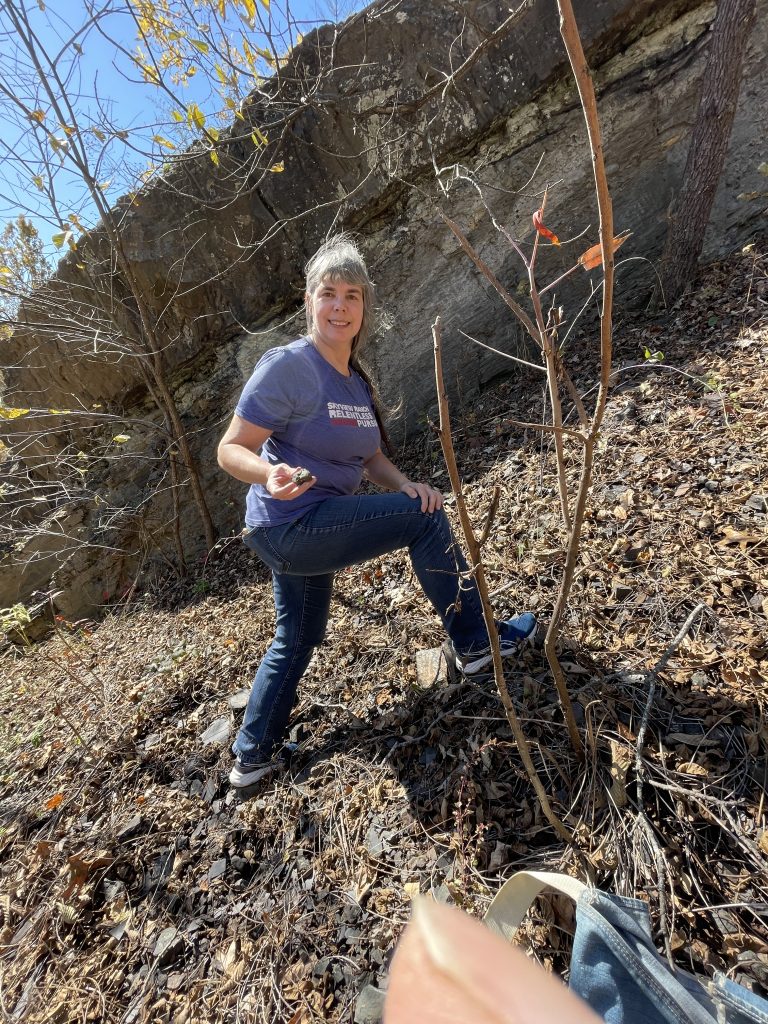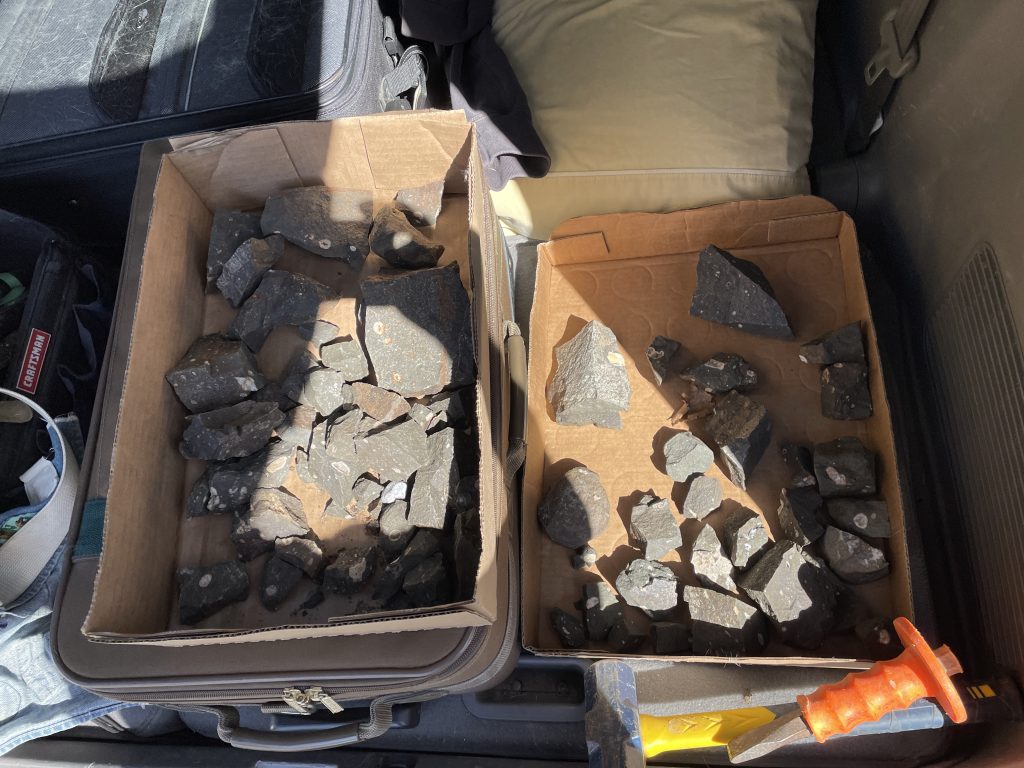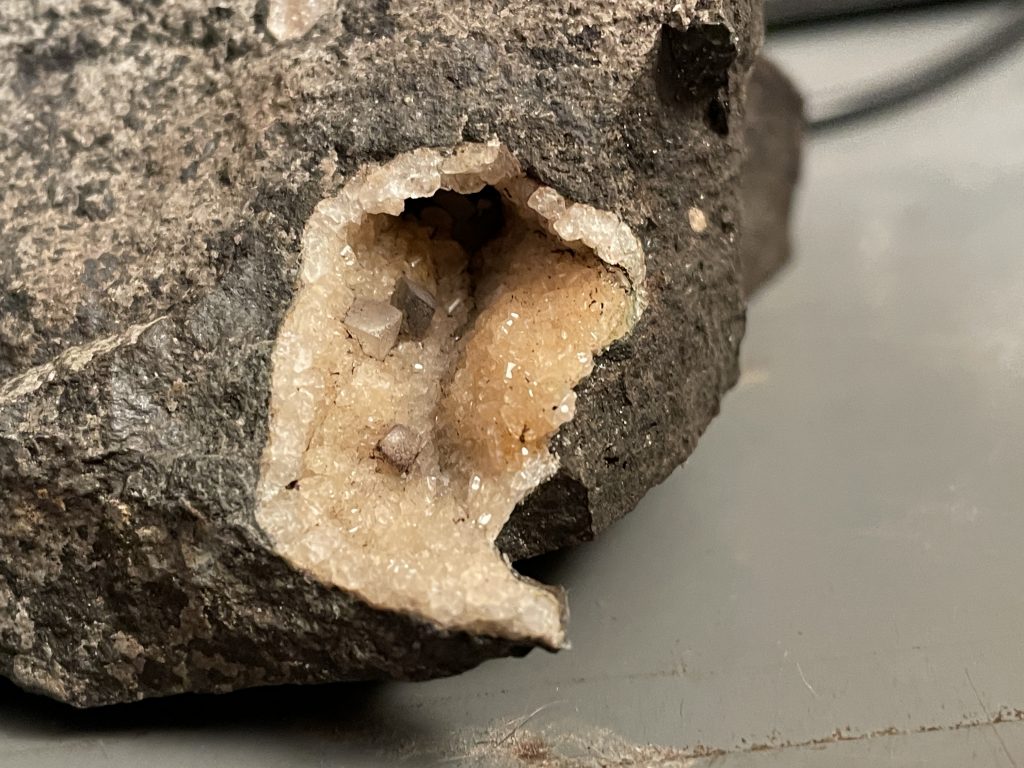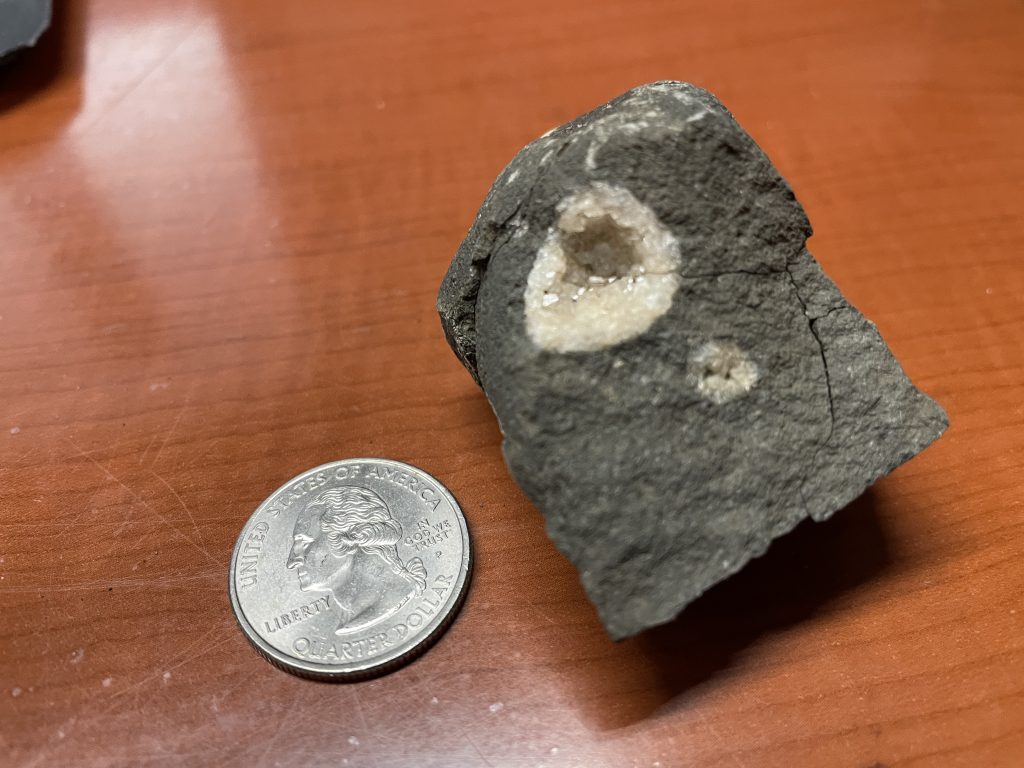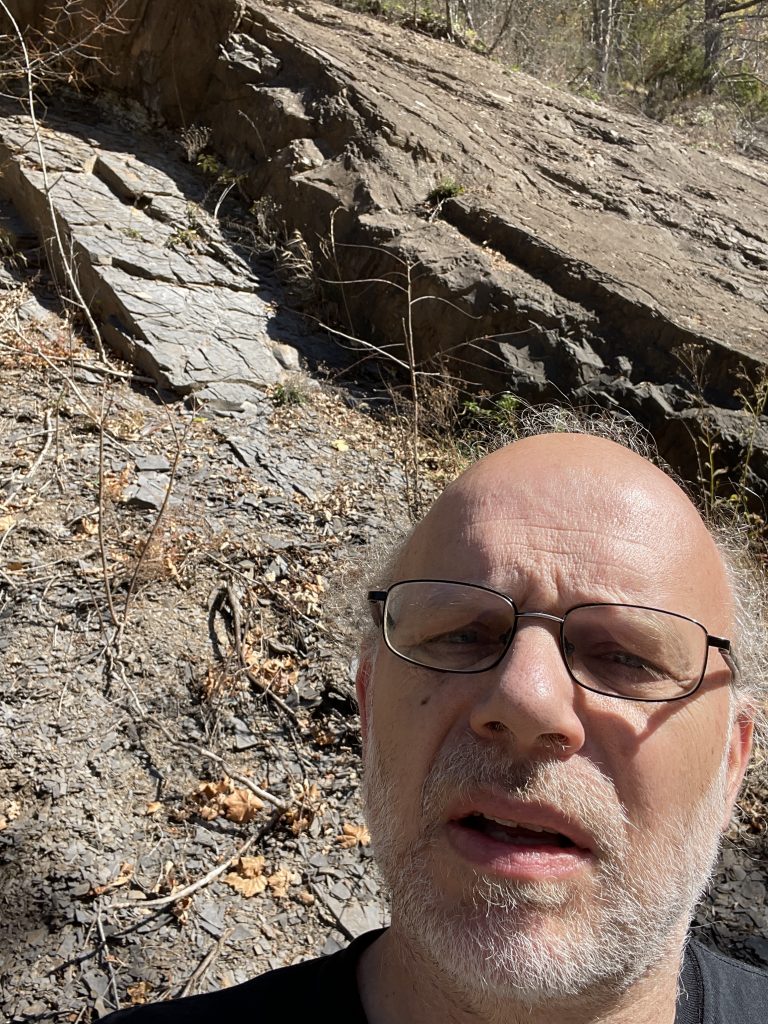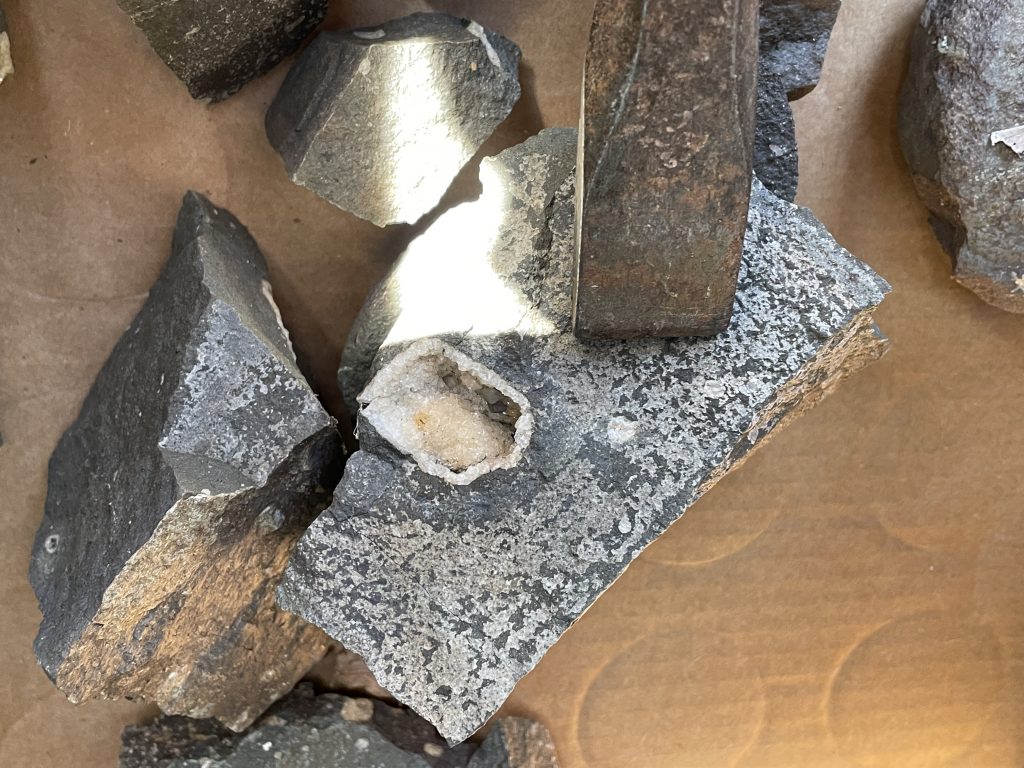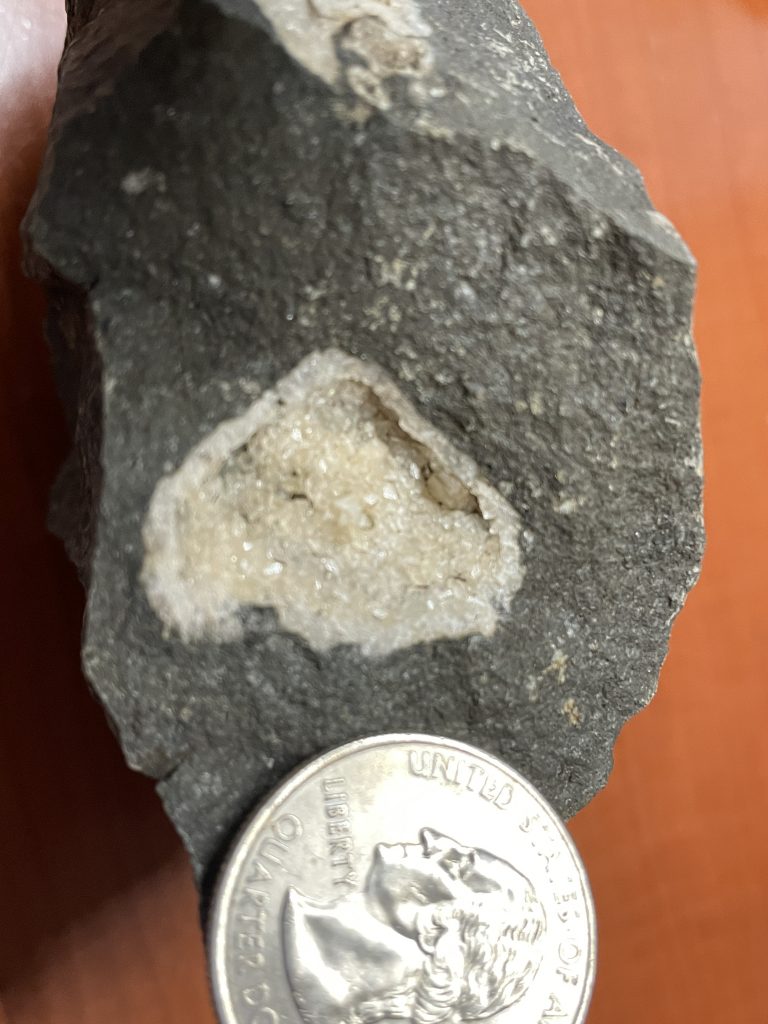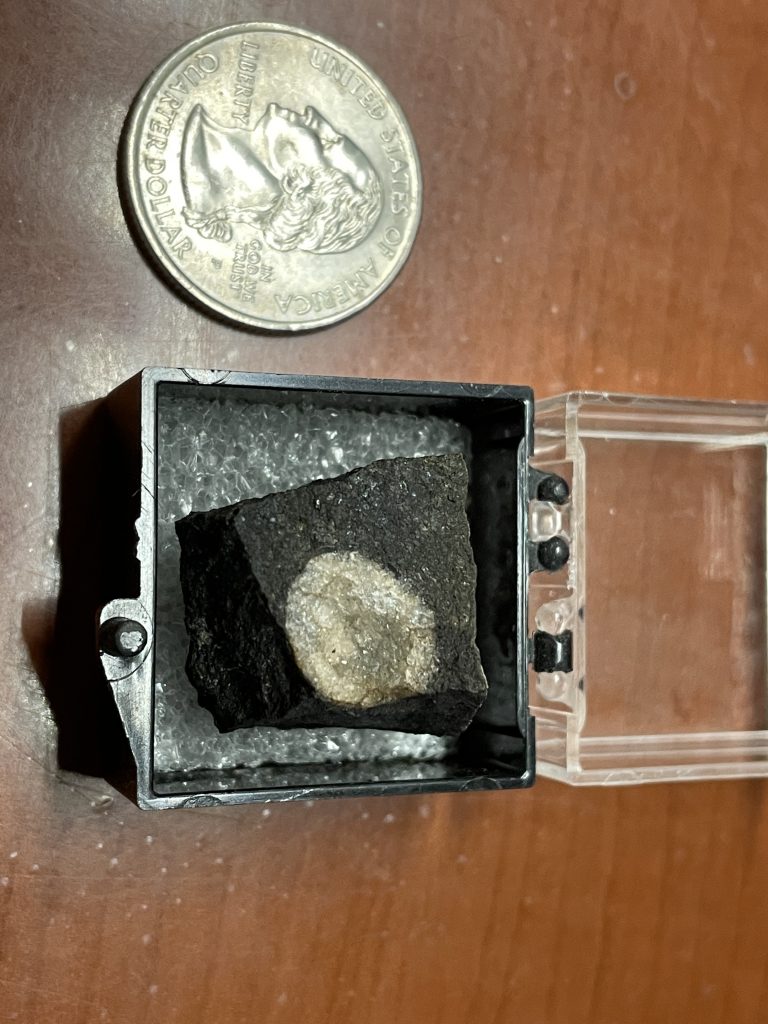Location:
(Source: Mindat.org) Sugar Grove Basalt is a amygdaloidal basalt dike or sill that intruded into the Devonian Millboro shale formation. This outcrop is located along the west side of County road 21 approximately 5.5 miles south of the village of Sugar Grove, West Virginia and approximately 2 miles north of the Virginia border and 9 miles north of US 250.
The intrusion is Eocene age, 45 MA+/- and up to approximately 10 feet thick. Amygdules greater than 1 inch in diameter are uncommon making this locality strictly a micromount locality. The basalt on is part of a suite of Eocene dikes, diatremes and plugs centered on the areas around Monterey, Va and Ugly Mountain, Pendelton Co., WVa. Older, Jurassic and Cretaceous, dikes and plugs extend into the Shenandoah Valley to the vicinity of Harrisonburg and Staunton. The road side outcrop south of Sugar Grove is the only one known to contain attractive secondary minerals. These are the youngest volcanic rocks east of the Rocky Mountains.
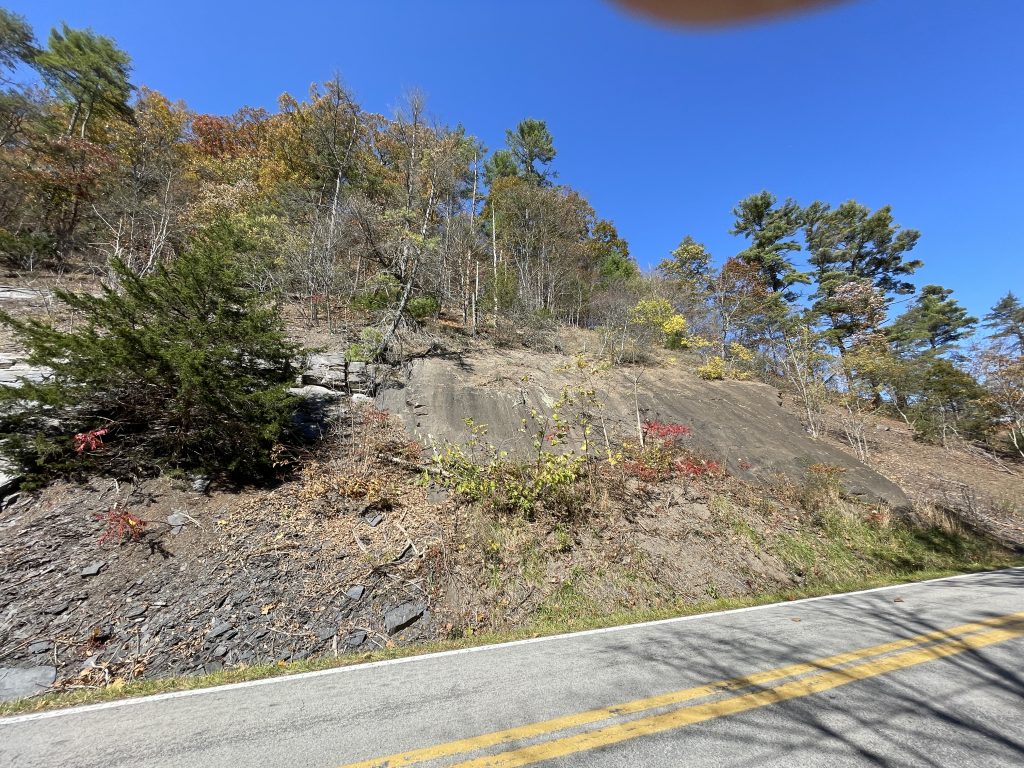
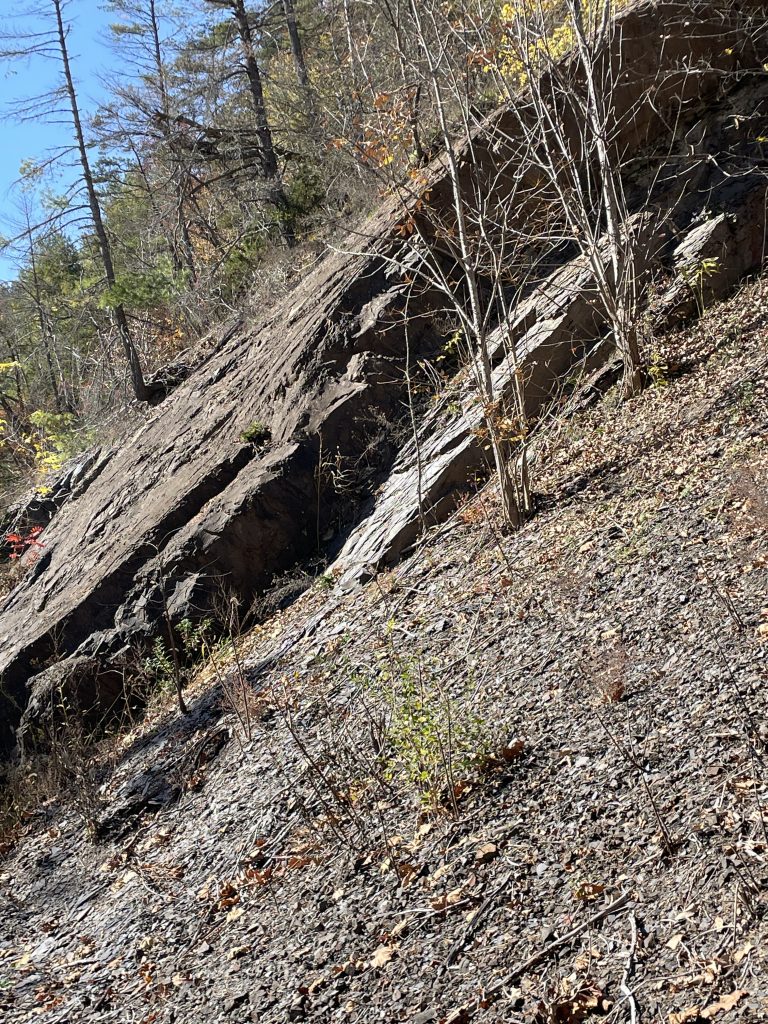
Minerals:
- Zeolites: Most common Chabazite and variety of Chabazite (Phacolite – colorless lens shaped crystals).
- Others zeoloites reported: Analcime, Harmotome, Mesolite, Natrolite, Phillipsite, and Thomsonite.
- Other minerals reported: Include: Aragonite, Barite, Calcite, Gypsum, Nontronite, Pyrite, Quartz.
- Rock forming minerals include: Augite, chlorite group, plagioclase, and smectite group.
- Notable: Zeolites and pyrite needles.
The secondary mineralization is primarily in the top 2-3 feet of the basalt dike.
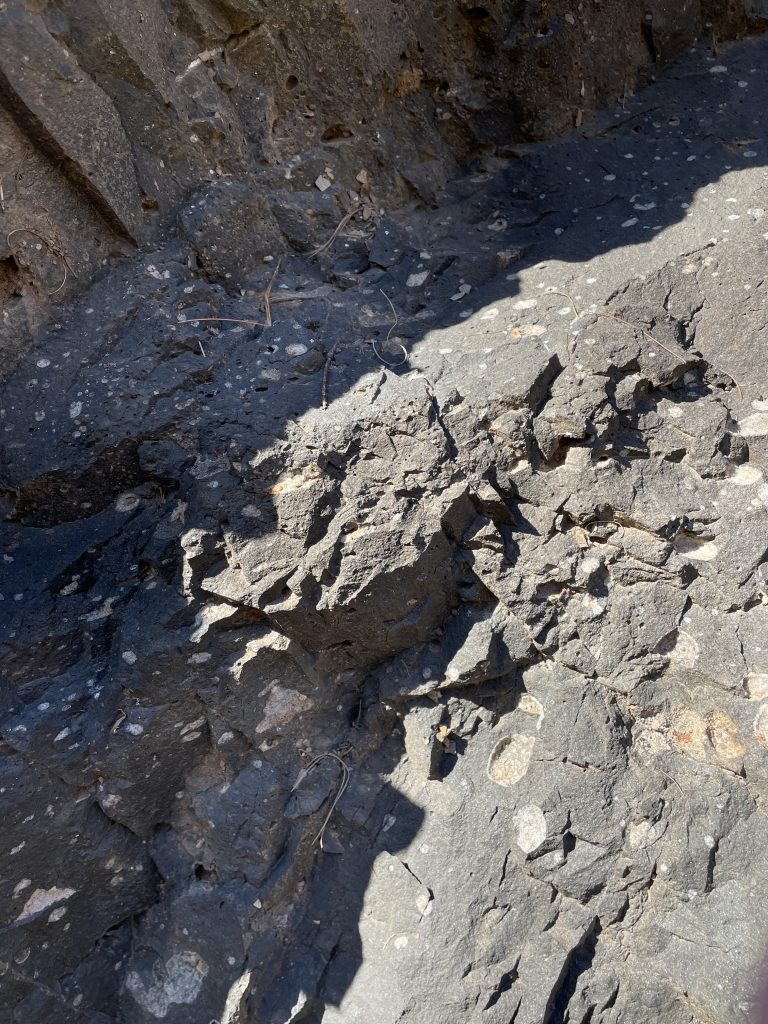

Directions:
The outcrop is immediately along the west side of County Road 21 on the opposite side from the river. There is very little space to pull the road near the outcrop.
Use map navigation to get driving directions to this location. Lat, Long: 38.44722,-79.35694
From the North: Heading south from Sugar Grove, you will pass a farm with a truck repair yard (on the left) before you arrive at the outcrop which will be no more than 300 feet past the driveway on the right hand side of the road. If you pass Fox Trap Lane you have gone too far.
From the South: Head east on US 250 from Monterey Virginia and turn north onto Virginia road 614. West Virginia border is approximately 9 miles north of US 250. Road 614 becomes County road 21 in West Virginia. Look for Fox Trap Lane (road) on the left ~2 miles north of the border. Once you pass Fox Trap Lane, the basalt outcrop will be 700 ft on the left. If you pass a farm on the right with a large vehicle yard you have gone too far.
Before you go: This entire valley from Sugar Grove WV to US 250 has almost no cell phone coverage so it is advisable to have paper / printed detail street map of the area with you. The outcrop is visible along County road 21 in Google Street View.

Collecting:
The collecting area is along west side of the road. Specimens can be collected from weathered basalt pieces on the talus slope of the hillside without any equipment. The unweathered basaltic rock is quite hard and would require hand sledges, chisels and eye protection. Plenty of specimens can be found without breaking any rocks.
DO NOT be greedy. This is a wonderful location and should produce specimens for the foreseeable future. Collect a respective amount for your collection and a few for trading. Good locations which are readily accessible are rare and should be conserved for all.
Caution: The slope is very steep and rocks rolling loose will reach the road. Also, the area is copperhead snake territory. Be careful when moving downed leaves and rocks along the edge of the road and along trees growing on the slope. Best not to use your hands.
10-15-2022 Visit:
We collected a small flat of specimens in a little more than an hour. I brought hammers, chisels and eye protection but we found so many nice specimens without working up a sweat.
